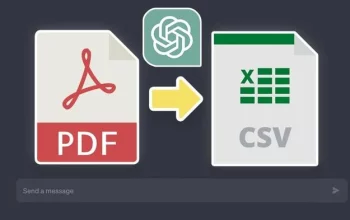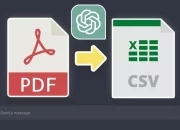Creating datasets to train a Language Model (LM) or Large Language Model (LLM) is normally a complex process that often involves several steps and considerations. However the Prompt Engineering YouTube channel has created an informative video showing how you can create datasets to fine-tuning your Llama 2 installation using the OpenAI code interpreter and GPT-4.
Creating massive datasets for an LLM is a complex task that often requires a collaborative effort involving domain experts, data scientists, legal experts, and others. Having a well-defined strategy and methodology can be essential in creating a dataset that is both effective for training the model and compliant with relevant laws and ethical guidelines. In some cases, you may be able to leverage existing datasets that have been created for similar tasks. However, it’s important to make sure that those datasets align with your specific goals and that you have the right to use them for your intended purpose.
Using Prompt pairs
In the tutorial below a method known as prompt pairs has been used. Prompt pairs consist of a series of input-output examples that guide the model in understanding a particular task or generating specific responses. Let’s explore this concept in more detail:
- Prompt: This is the input to the model, often formulated as a question or statement that specifies a particular task. It’s called a “prompt” because it prompts the model to generate a response.
- Response: This is the expected output for the given prompt, based on the task specified. It’s what the model should ideally produce when presented with the corresponding prompt.
Together, the prompt and the response form a “prompt pair.”
How to create custom datasets to train Llama 2
Other articles you may find interesting on the subject of Llama 2 :
Usage in Training
In training a model, you’ll usually have a dataset consisting of many such prompt pairs. Here’s how they are typically used:
- Supervised Learning: The prompt pairs act as a supervisory signal, guiding the model to learn the mapping between prompts and responses. The model is trained to minimize the difference between its generated responses and the provided correct responses.
- Fine-Tuning: Prompt pairs are especially useful for fine-tuning pre-trained models on specific tasks or domains. By providing examples that are directly relevant to the desired task, you can guide a general-purpose model to specialize in that area.
- Data Efficiency: By providing clear examples of desired input-output behavior, prompt pairs can enable more efficient learning. This can be particularly valuable when only a small amount of training data is available.
Examples
Here’s an example of a prompt pair for a translation task:
- Prompt: “Translate the following English text to French: ‘Hello, World!’”
- Response: “Bonjour, le monde!”
For a mathematical task, a prompt pair might look like:
- Prompt: “What is the sum of 5 and 3?”
- Response: “8”
Creating good prompt pairs can be a nuanced task, and there are several considerations to keep in mind:
- Quality: The prompt pairs must be accurate and clear to guide the model effectively.
- Diversity: Including a diverse set of examples helps ensure that the model learns a robust understanding of the task.
- Bias: Care must be taken to avoid introducing biases through the chosen prompt pairs, as these can be inadvertently learned by the model.
Prompt pairs are a fundamental concept in many natural language processing applications, aiding in everything from task-specific fine-tuning to the creation of interactive, conversational agents.
Creating huge datasets to train AI
Normally the process of creating datasets typically includes the following stages:
- Define the Task and Scope: Determine what specific task the LLM will be performing and the scope of knowledge required. For example, are you building a general-purpose model or something more specialized, like a medical language model?
- Collect Data:
- Public Sources: Gather data from public sources like Wikipedia, books, research papers, websites, etc. Ensure that the data aligns with your target task.
- Create Original Content: You can create new content, possibly by human annotators.
- Specialized Datasets: Acquire specialized datasets that may be needed, which might be domain-specific or tailored to particular tasks.
- Legal and Ethical Considerations: Make sure to adhere to intellectual property laws, privacy regulations, and obtain the necessary permissions.
- Preprocess and Clean Data:
- Tokenization: Break the text into smaller parts like words, subwords, or characters.
- Normalization: Standardize the text to a common form, such as converting all characters to lowercase.
- Removing Sensitive Information: If applicable, remove or anonymize any personal or sensitive information.
- Handling Multilingual Data: If your model needs to be multilingual, you will have to consider handling various languages and scripts.
- Annotation: Depending on the task, you may need to annotate the data.
- Manual Annotation: This can involve human annotators labeling parts of the text.
- Automatic Annotation: Utilizing existing models or rule-based systems to label data.
- Quality Control: Implementing processes to ensure the quality of annotations.
- Split the Data: Divide the dataset into training, validation, and test sets. This will allow you to train the model on one subset and validate and test its performance on unseen data.
- Augmentation (Optional): Augment the data by adding noise, synonyms, or other transformations to increase the size and diversity of the dataset.
- Data Format Conversion: Convert the data into a format suitable for the training framework you are using, such as TensorFlow or PyTorch.
- Ethics and Bias Considerations: Consider potential biases in your dataset and take steps to mitigate them if possible.
- Compliance with Regulations: Ensure that all actions taken during dataset creation are compliant with legal regulations and ethical guidelines, including GDPR or other local laws related to data handling.
- Documentation: Provide detailed documentation of the entire process, including data sources, preprocessing steps, annotation guidelines, and any other relevant information. This helps in understanding the dataset and can be crucial for reproducibility.
To learn more about the Meta Ai large language model jump over to the official website. The current release includes model weights and starting code for pretrained and fine-tuned Llama language models ranging from 7B to 70B parameters. The Llama 2 LLM was pretrained on publicly available online data sources says Meta. The fine-tuned model, Llama-2-chat, leverages publicly available instruction datasets and over 1 million human annotations.
Filed Under: Guides, Top News
Latest Aboutworldnews
Disclosure: Some of our articles include affiliate links. If you buy something through one of these links, Aboutworldnews may earn an affiliate commission. Learn about our Disclosure Policy.













